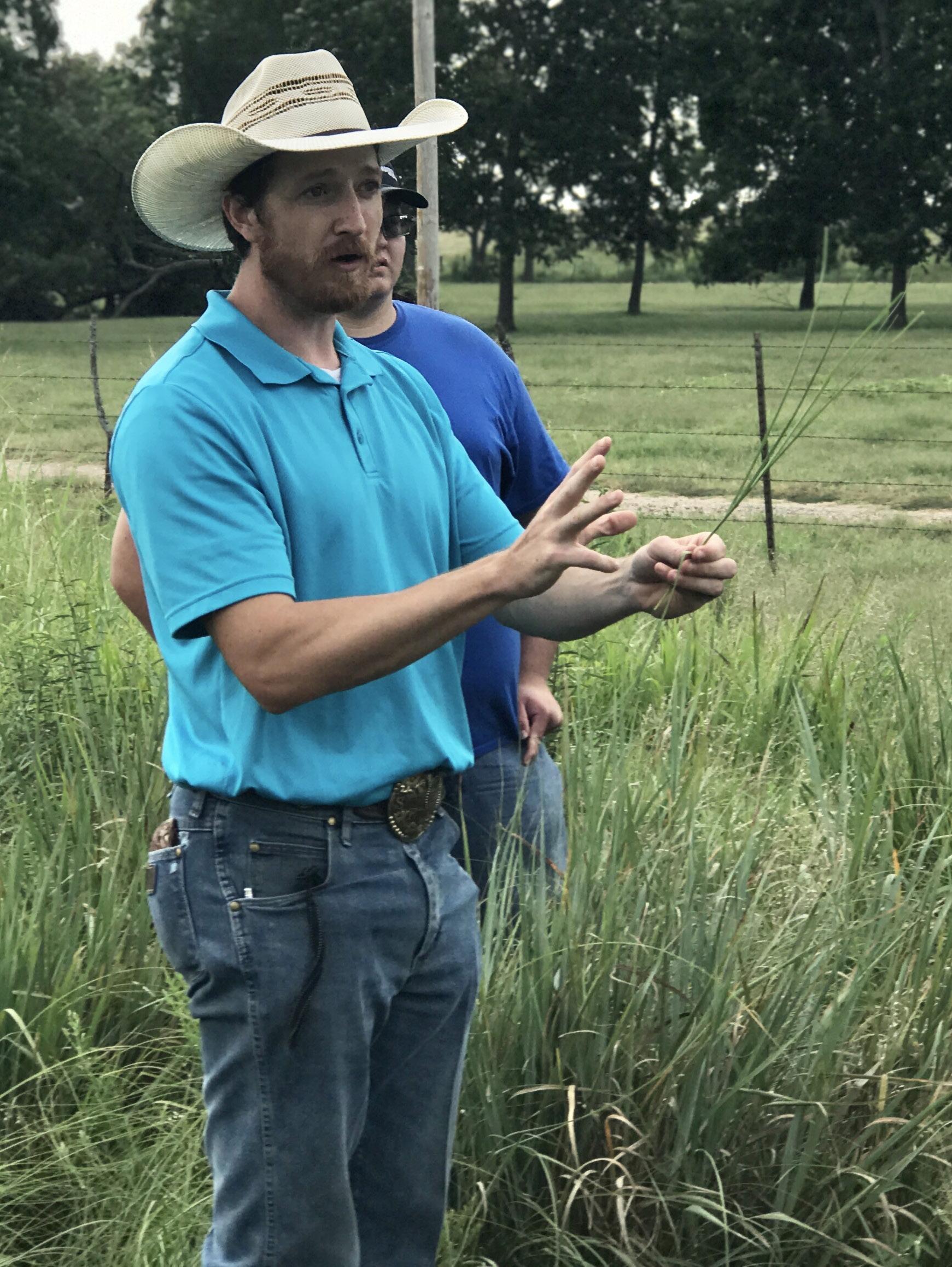
1 minute read
LEARNING WITH THE BRAND



SOIL HEALTH PLANT I.D.
n August first, attendees of a Pontotoc County Soil Health Field Day learned steps for assessing and improving soil health in cropland and pasture land. The two part work shop was hosted by the Pontotoc County Conservation District and Great Plains Kubota. Other contributors included the NRCS, The Pontotoc County OSU Extension Office, and the USDA. It was held at the Sunrise Ranch and took place in various different fields around the area. In addition participants of this workshop learned about native plant identification. The components of soil health are about much more than just dirt. Plants and livestock are an integral part of soils ecosystem. There are five principals to creating better soil: 1. Keep Soil Covered 2. Always Have a Living Root 3. Have A Diverse Plant Community 4. Manage Disturbance 5. Use Livestock Wisely Greg Scott of the NRCS presented the soil health section of the work shop which primarily focused on erosion control, improving infiltration, effects of tem-
Operate, increasing moisture, and the benefits of cover - LEARNING WITH THEBRAND crops. Additionally, two “Haney - Soil Health Analysis” reports were taken from two different fields for comparison. One was from crop land and the other from pasture land. This report gave attendees a visual reference on how using available resources such as the Oklahoma Conservation Commission can use applied science to improve their soil. Blane Stacy was the presenter for the plant identification for soil health section, which focused on basic plant anatomy, grassland soil health, and comparing soil health in cropland and grasslands. The reasoning behind plant identification was essentially to teach how plant diversity and identification can maximize the natural resources on one’s property. After decades of what we believed to best practices, farmers and ranchers are starting to understand that creating better soil is a process that, with implemented practices, over time can naturally reduce cost and increase profits. It’s field days like this, along with the knowledge provided by agencies therein, that help local families obtain the skills needed to strengthen their operations.




